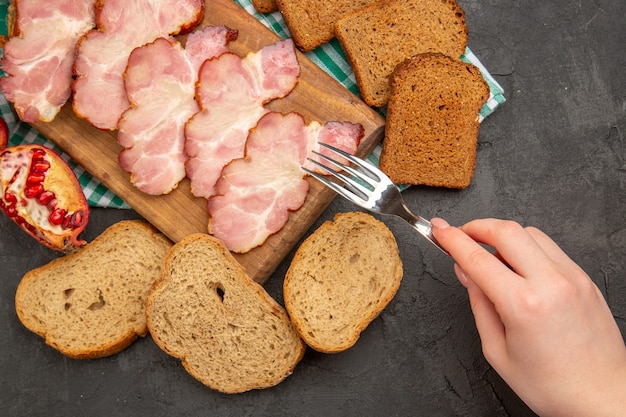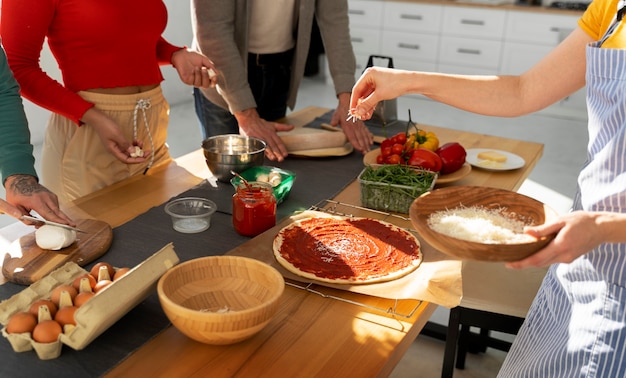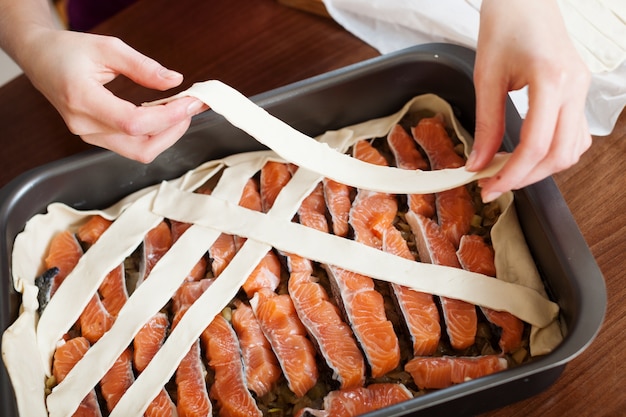You've got a beautiful meatloaf, all prepped and ready to go, sitting in its baking dish. Now, you're probably wondering: how long do I bake it at 350 degrees fahrenheit? This is the crucial question that will determine whether your meatloaf is a juicy, flavorful triumph or a dry, disappointing disaster.
I've been making meatloaf for years, and I've learned a few things about getting it just right. It's not just about baking it for a specific amount of time. You need to understand the whole process – from the type of meatloaf you're making to the size of your baking dish. So, let's delve into the details and make sure you end up with a meatloaf that'll make everyone say, "Wow, that's amazing!"
Part 1: Unveiling the Secrets of meatloaf baking

The Science Behind perfect meatloaf
Let's talk science for a moment. When you bake meatloaf, the heat from the oven cooks the meat through, causing it to firm up and develop those delicious, savory flavors. It's a beautiful chemical reaction. But here's the catch: it's not just about the heat; it's about the time. The longer you bake, the more moisture evaporates, potentially leading to a dry and crumbly meatloaf.
Why 350 Degrees Fahrenheit is the Goldilocks Temperature
So, why 350 degrees Fahrenheit? It's the magic number because it's the perfect balance: hot enough to cook the meatloaf thoroughly, but not so hot that it burns the outside before the inside is cooked. This temperature allows you to achieve a beautiful, golden-brown exterior without drying out the inside.
The Importance of Size in Meatloaf Baking
The size of your meatloaf significantly influences how long it needs to bake. A smaller meatloaf will bake faster than a larger one. And the shape matters too! A round loaf will bake more evenly than a loaf with an odd shape. Keep these factors in mind as you plan your baking time.
Part 2: Baking Time: A Detailed Breakdown

Alright, let's get down to brass tacks. Here's a detailed guide to help you determine the baking time for your meatloaf at 350 degrees Fahrenheit:
Small Meatloaf (1.5 - 2 lbs):
This little guy, usually around 1.5 to 2 pounds, typically bakes for 45 to 60 minutes.
Medium Meatloaf (2.5 - 3 lbs):
For a medium-sized meatloaf (2.5 to 3 pounds), expect a baking time of 60 to 75 minutes.
Large Meatloaf (3.5 - 4 lbs):
A large meatloaf, weighing 3.5 to 4 pounds, needs a bit more time in the oven, around 75 to 90 minutes.
Keep in mind, these are general guidelines. We need to factor in a few more variables before we can be absolutely certain.
Part 3: The Art of Customization: Tailoring Your Meatloaf

Every meatloaf is unique, even if you're using the same basic recipe. The ingredients you add, the type of meat you use, and even the baking dish you choose all influence baking time.
The Impact of Ingredients
If you're loading your meatloaf with veggies, extra seasonings, or cheese, it might take a bit longer to bake through. These extra ingredients can make it denser, so plan for a few extra minutes in the oven.
Choosing the Right Meat
Different meats cook at different speeds. Lean ground beef might bake a little faster than a mixture of beef and pork. Pay attention and don't hesitate to add a few minutes if needed.
The Role of the Baking Dish
The type of baking dish you use plays a significant role too. A dark-coloured dish absorbs more heat, leading to a slightly faster baking time. A light-coloured dish reflects more heat, so your meatloaf might take a little longer.
Part 4: Mastering the internal temperature: The Ultimate Test
The most reliable way to know if your meatloaf is cooked through is to check its internal temperature. You want it to reach a safe temperature of 155 degrees Fahrenheit. Use a meat thermometer, inserting it into the thickest part of the loaf, making sure it doesn't touch any bone.
The Importance of Resting
Once your meatloaf reaches the desired internal temperature, let it rest for about 10 to 15 minutes before slicing and serving. This allows the juices to redistribute throughout the loaf, resulting in a more tender and juicy meatloaf. Cover the meatloaf loosely with foil while it rests.
Part 5: Visual Clues: When to Know Your Meatloaf is Done
You don't have a meat thermometer? No problem! We can still figure out if your meatloaf is ready. Here are some visual clues to help you:
- The Colour: The meatloaf should be nicely browned on top, and the sides should be cooked through. There shouldn't be any pink left.
- The Firmness: Give the top of the meatloaf a gentle poke. It should feel firm, not soft or jiggly.
- The Juices: When you poke the meatloaf, the juices that come out should be clear, not pink.
These visual cues are helpful, but it's always best to use a meat thermometer for the most accurate results, especially if you're cooking for a large crowd.
Part 6: The Art of the Topping: The Final Touch
You've got your meatloaf baking beautifully, but let's not forget about the topping! Whether you're using a classic mixture of breadcrumbs and ketchup, or something more adventurous, the topping can make or break your meatloaf.
Topping Placement: The Key to Even Baking
Ensure your topping is evenly spread across the meatloaf, with no gaps or thick spots. It should be a nice, even layer that will cook evenly and contribute to the flavor and texture of the meatloaf.
Topping Time Considerations
If you're using a topping, you might need to add a few extra minutes to your baking time, especially if it's a thicker topping. Keep a close eye on your meatloaf during the last 15 minutes of baking and adjust the baking time as needed.
Part 7: Unleashing Your Creativity: Beyond the classic meatloaf
The beauty of meatloaf is its versatility. You can experiment with different flavour combinations, toppings, and even the shape of your meatloaf! Here are a few ideas to spark your culinary imagination:
Variations on the Classic:
- Add some veggies: Chop up some onions, carrots, or peppers and mix them into your meatloaf mixture for a tasty twist.
- Experiment with cheese: Shredded cheddar, mozzarella, or even some blue cheese can add a touch of decadence to your meatloaf.
- Spice it up: Try adding some chili powder, cayenne pepper, or even some hot sauce for a little kick.
- Go for a gourmet topping: Instead of ketchup, try topping your meatloaf with a glaze made with barbecue sauce, brown sugar, or even a balsamic reduction.
Making It Fancy:
Want to impress your guests with a show-stopping meatloaf? Consider making a heart-shaped loaf or even a meatloaf crown!
The possibilities are endless! Don't be afraid to experiment and find your own personal meatloaf masterpiece.
Part 8: Tips and Tricks for Perfect Meatloaf
Here are a few tips and tricks to help you achieve meatloaf perfection:
- Mix it well: Don't over-mix, but make sure your meatloaf mixture is well combined. This will help to ensure an even texture.
- Let it rest: After you've shaped your meatloaf, let it chill in the refrigerator for about 30 minutes before baking. This will help the meatloaf hold its shape and prevent it from cracking during baking.
- Bake on a rack: Place your meatloaf on a rack in your baking pan to allow air to circulate around it. This will help it to cook evenly.
- Use a meat thermometer: It's always a good idea to use a meat thermometer to ensure your meatloaf is cooked through to the safe internal temperature.
- Don't overbake: Overbaking your meatloaf can lead to a dry and crumbly texture. Remove it from the oven when it reaches the desired internal temperature and let it rest before slicing.
Part 9: Meatloaf: A Culinary Classic
Meatloaf is a classic dish for a reason. It's a delicious and satisfying meal that's perfect for any occasion. With a little practice and the right technique, you can easily master the art of making perfect meatloaf.
And the best part? It's a dish that's full of potential for creativity and flavor. So, get out there, experiment, and find your own personal meatloaf recipe that you'll love for years to come.
Part 10: FAQs
1. How long do I need to bake a meatloaf at 350 degrees Fahrenheit?
The baking time for meatloaf at 350 degrees Fahrenheit depends on the size of the meatloaf. A small meatloaf (1.5-2 lbs) will typically bake for 45 to 60 minutes. A medium meatloaf (2.5-3 lbs) will take 60 to 75 minutes. A large meatloaf (3.5-4 lbs) requires 75 to 90 minutes. Remember, these are just general guidelines. It's best to use a meat thermometer to ensure your meatloaf is cooked through.
2. How do I know if my meatloaf is cooked through?
The best way to know if your meatloaf is cooked through is to use a meat thermometer. Insert the thermometer into the thickest part of the meatloaf, making sure it doesn't touch any bone. The meatloaf is cooked through when it reaches an internal temperature of 155 degrees Fahrenheit. You can also use visual cues, like checking the colour (it should be nicely browned on top and cooked through on the sides), the firmness (it should feel firm, not soft or jiggly), and the juices (they should be clear, not pink) to determine if it's done.
3. What if my meatloaf is dry?
If you've overbaked your meatloaf, it's likely to be dry. There are a few ways to address this:
- Add some moisture: While still hot, pour a little gravy or broth over the meatloaf to add moisture.
- Serve with a sauce: Serve the meatloaf with a flavorful sauce, such as a mushroom gravy or a tomato sauce, to add moisture and flavor.
- Make a meatloaf sandwich: Slice the meatloaf and serve it on a bun with some pickles, onions, and cheese. The bread will soak up some of the moisture, making the meatloaf more palatable.
4. Can I freeze meatloaf?
Absolutely! Meatloaf freezes well. To freeze meatloaf, wrap it tightly in plastic wrap and then aluminum foil. It can be frozen for up to 3 months. When you're ready to eat it, thaw it in the refrigerator overnight and then bake it according to the original instructions.
5. What are some creative ideas for meatloaf toppings?
The possibilities are endless! Here are a few ideas:
- A sweet and smoky glaze: Mix together barbecue sauce, brown sugar, and a little bit of mustard for a sweet and smoky glaze.
- A cheesy topping: Spread a layer of shredded cheddar cheese over your meatloaf before baking. You can also add some breadcrumbs or cornflakes to the cheese mixture for a crunchy topping.
- A herb-infused topping: Mix together breadcrumbs, grated Parmesan cheese, chopped herbs, and a little bit of olive oil for a flavorful topping.
Get creative and have fun with it! You can even experiment with different flavor combinations to find your own favorite meatloaf topping.
Part 11: Beyond Baking Time: Additional Tips
1. Don't Overcrowd Your Oven
Give your meatloaf ample space to bake evenly. If you're baking other dishes in the oven alongside your meatloaf, make sure they aren't crowding it. This will help prevent uneven cooking and ensure your meatloaf bakes to perfection.
2. Use a Quality Meat Thermometer
Investing in a good meat thermometer is essential for consistent and accurate results. It's the most reliable way to guarantee that your meatloaf is cooked through to the safe internal temperature. Look for a thermometer with a clear display and a probe that's long enough to reach the center of the meatloaf.
3. Don't Be Afraid to Experiment
Remember, meatloaf is a blank canvas for your culinary creativity. Experiment with different ingredients, spices, and toppings to discover your own unique and delicious variations. The more you experiment, the more you'll learn and refine your meatloaf-making skills.
With these tips and a little practice, you'll be a meatloaf master in no time. So, get baking, experiment, and enjoy the delicious results!
Everyone is watching

How to Cook Frozen Lobster Tails Perfectly: A Step-by-Step Guide
RecipesLobster. Just the word conjures up images of lavish meals, special occasions, and a taste of luxury. But let's...

Pigs in a Blanket Cooking Time: How Long to Bake for Perfect Results
RecipesAh, pigs in a blanket. Just the name conjures up images of those delightful little parcels of crispy pastry en...

Pork Fillet Cooking Time: How Long to Cook It Perfectly
RecipesPork fillet, or tenderloin as it's sometimes called, is a real favourite in our house. It's so versatile, and...

The Ultimate Guide to Cooking Delicious Frankfurters
RecipesLet's face it, we all love a good frankfurter. It's a classic, simple, and always satisfying. But let's be rea...

The Ultimate Guide to Tender, Juicy Pulled Pork
RecipesRight, let's talk pulled pork. It's one of those dishes that just screams "comfort food," doesn't it? I mean...
